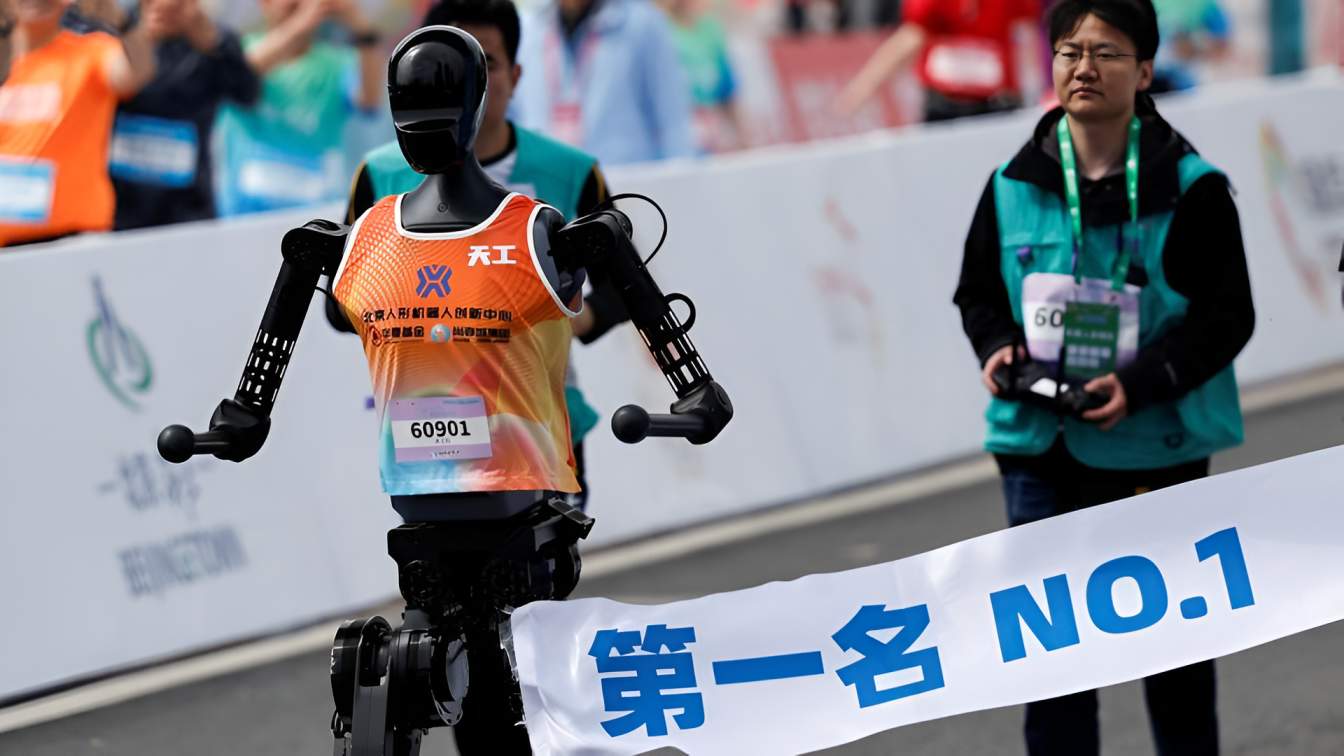Some of China’s best humanoid robots took on the challenge of racing against human marathon runners on Saturday.
According to Bloomberg, one fell at the starting line. Another’s head fell off and rolled on the ground. And one collapsed and broke into pieces.
In what was billed as the world’s first half-marathon for androids, just four out of 21 robotic runners completed the race in Beijing’s southern tech hub of E-Town within the allotted four hours.
The winner was five-foot-ten Tiangong Ultra, who made it to the finish line in two hours and 40 minutes, far behind the hourlong performance of the human gold medalists.
It took more than three hours for the other three bots that managed to complete the 13 mile (20.9 kilometer) course to come in.
The man-versus-machine competition was presented as a showcase for China’s ambition in areas from AI to robotics to semiconductors.
President Xi Jinping’s government has made the development of the key technologies a priority, ratcheting up trade tensions with the US.
Yet the result was often comical, with accidents and dropouts throughout the race.
While Tiangong paced around five miles per hour and looked like a proper athlete, many of its robotic peers weren’t designed to run quickly enough to finish the race within the time.
The Tiangong Ultra model was tailor-made for the race by Beijing-based X-Humanoid, a government-backed research institute that also has funding from Xiaomi Corp. and robotics upstart UBTech Robotics Corp Ltd.
"I’m very happy with the results, and everything met my expectations," X-Humanoid’s Chief Technology Officer, Tang Jian, said in an interview.
"This has been an extreme test of the robots’ resilience and stability. Our hope is that, whatever tasks robots perform in the future, they will be capable of operating around the clock, 24/7."
Still, it took one fall and three batteries for Tiangong to score the win, with the jersey-sporting machine leading the robot contestants throughout the race.
A human instructor — wearing a signaling device on his lower back — ran ahead of the bot for it to mimic his moves. Most of the other androids were controlled with joysticks by human operators running alongside them.
Some even had leashes. Two dozen teams crossed the starting line in succession, followed by mini shuttle buses with substitutes and engineers on standby.
To qualify for the race, the robots had to have a humanoid appearance and run on two legs.
They were allowed to replace batteries mid-race or even have a substitute take over, though with time penalties for each substitute used.
Bystanders, including parents with toddlers, cheered them on, and even some of the human contestants paused near the start to take photos of their mechanical counterparts.

